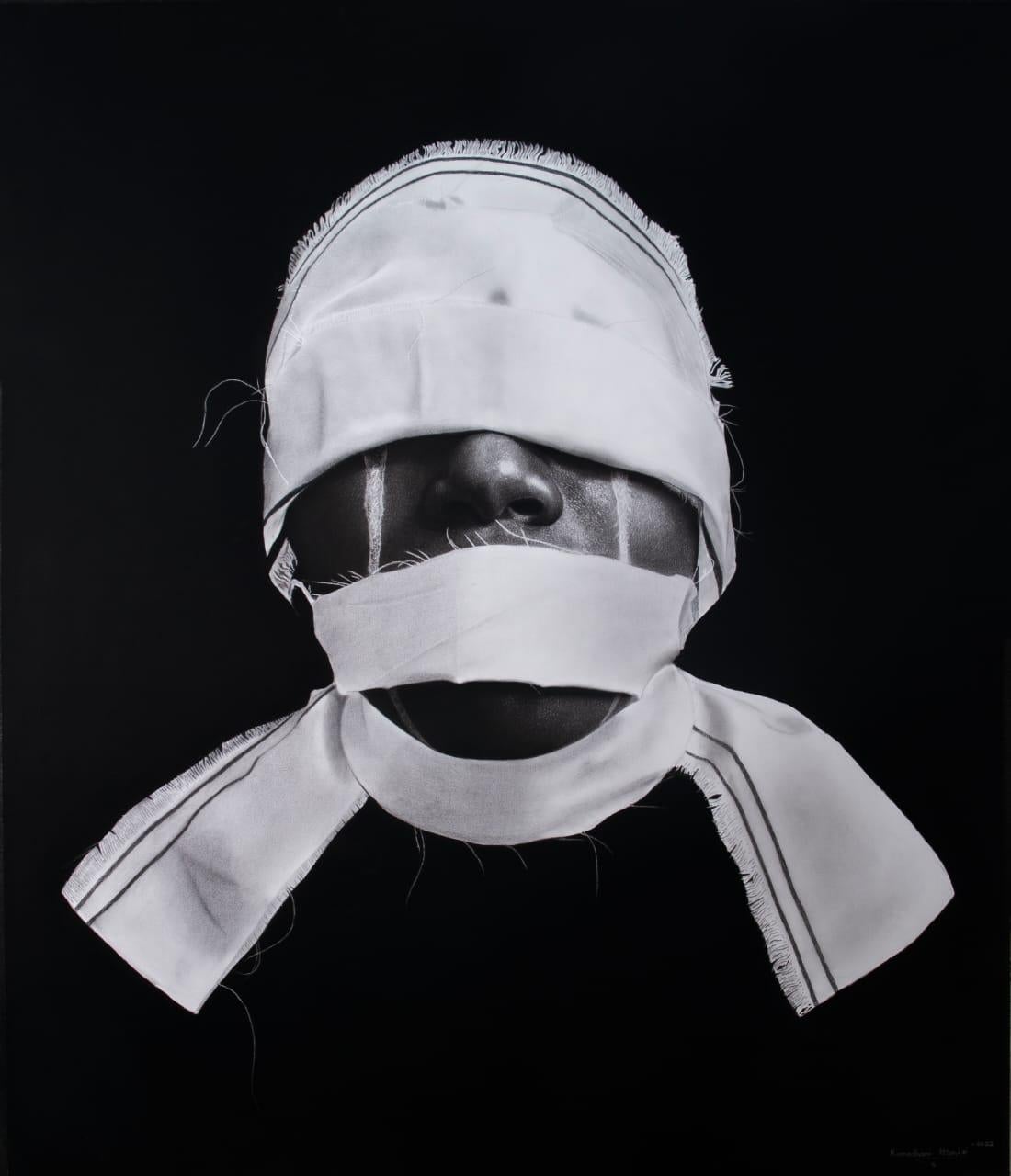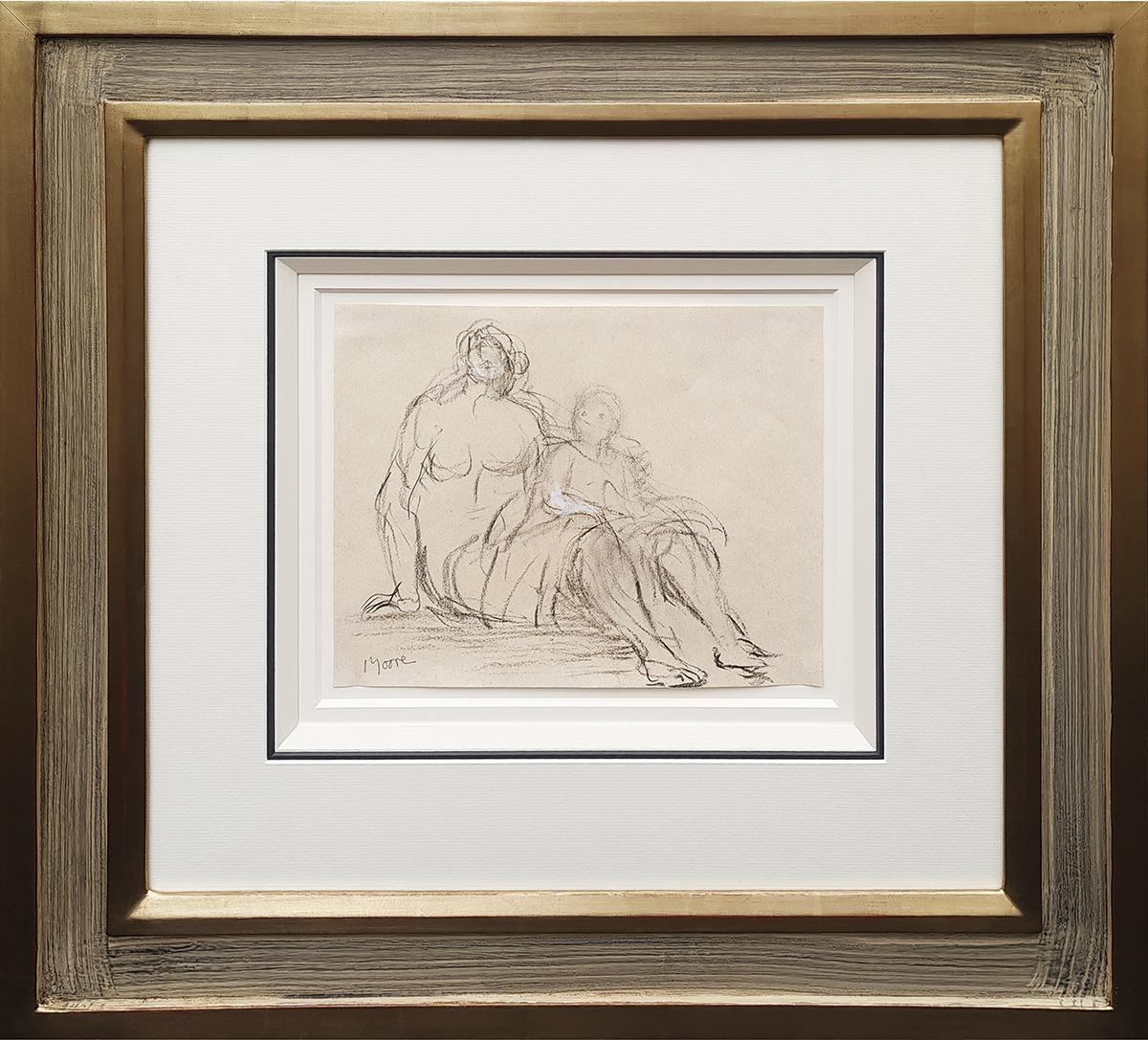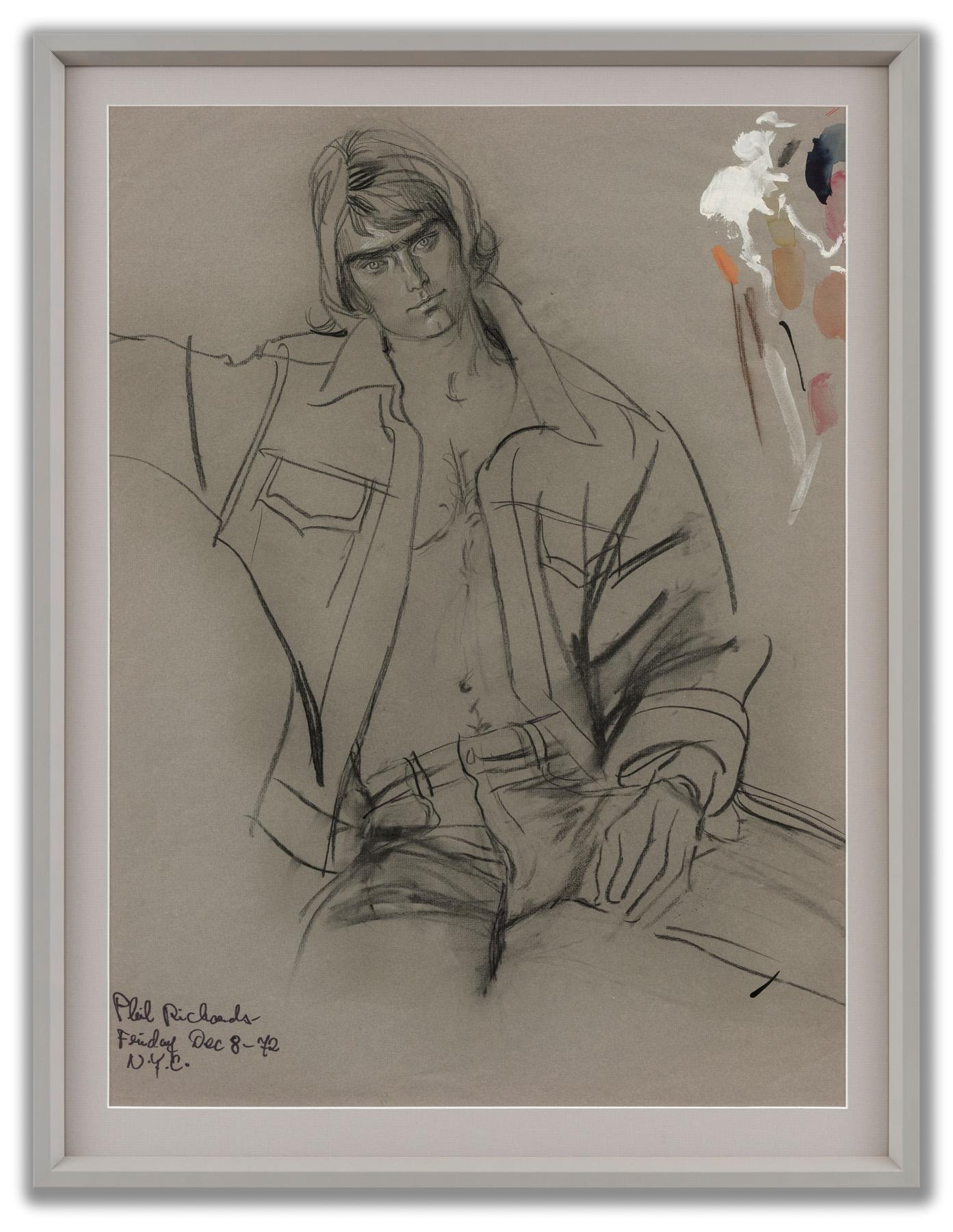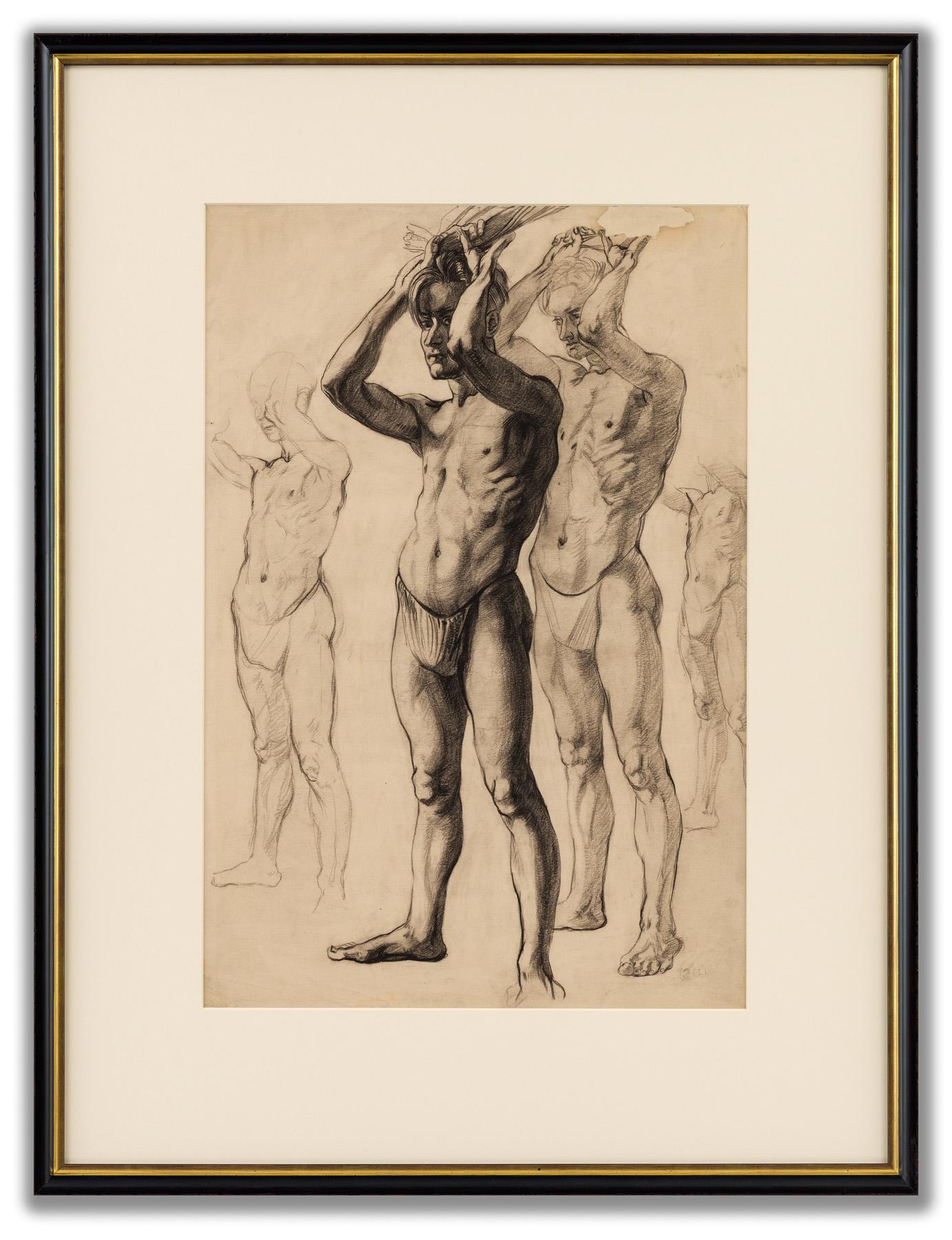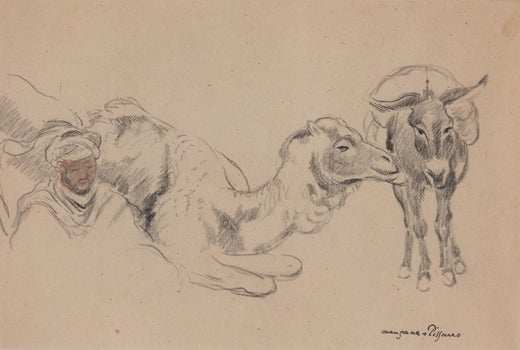Georges Henri Manzana PissarroRoboa Sleeping (The Artist's Wife) by Georges Manzana Pissarro - Drawingcirca 1940
circa 1940
About the Item
- Creator:Georges Henri Manzana Pissarro (French)
- Creation Year:circa 1940
- Dimensions:Height: 8.04 in (20.4 cm)Width: 12.29 in (31.2 cm)
- Medium:
- Period:
- Condition:
- Gallery Location:London, GB
- Reference Number:1stDibs: LU261213100452
Georges Henri Manzana Pissarro
Georges-Henri Pissarro, better known as Manzana, was born in Louveciennes, the third of Camille Pissarro and Julie Vellay’s seven children.
He studied with his father from a very early age and, like Lucien — Camille and Julie's eldest son — he spent his formative years surrounded by distinguished artists of the Impressionist movement, such as Monet, Cézanne, Renoir and Gauguin, all of whom frequented the Pissarro home. At his father's side he learned not only to handle brush and pencil but also to observe and to love nature.
Thus steeped in tradition and subjected to these diverse influences, Manzana turned out to be a prolific and versatile artist, producing work in oil, pastel and watercolour. As a young man he adopted his father's purely Impressionist style and produced a series of landscapes around Pontoise and Eragny. However, around 1906 he progressed beyond that and went in search of other means of expression via the design of furniture and decorative objects. The influence of Gauguin's exotic native scenes from Tahiti and Martinique certainly contributed to the development of Manzana's Orientalism, which at this time began to manifest itself in some of his paintings by his experimenting with gold, silver and copper paint.
Like all the second generation Pissarro artists, Georges initially worked under an assumed name. In 1894 he adopted "Manzana,” the family name of his maternal grandmother, and it was not until 1910, out of respect to his then-deceased father, that he employed his own family name when signing his work.
During the early 1900s Manzana regularly exhibited Impressionist works at the Salon d'Automne and the Salon des Indépendants, as well as Durand Ruel and Druet in Paris. In 1907 he had his first exhibition of decorative works at Vollard, but it was in 1914 that he had the most important exhibition of his career at the Musée des Arts Décoratifs, where he exhibited 311 works including tapestries, carpets, furniture, glassware, decorative paintings, etchings and lithographs.
Manzana continued to exhibit his work regularly until the late 1930s, splitting his time between Les Andelys and Paris, although spending several summers at Pont Aven in Brittany, where the local costume and lifestyle inspired a series of paintings in the 1930s. At the declaration of war in 1939, he moved with his family to Casablanca, where he stayed until 1947.
Manzana was married and widowed three times. He spent the last years of his life with Félix, his youngest son who was also an accomplished artist, in Menton, returning to the Impressionist tradition and painting the local landscape.
(Biography provided by Stern Pissarro Gallery)
- ShippingRetrieving quote...Ships From: London, United Kingdom
- Return PolicyA return for this item may be initiated within 7 days of delivery.
- La Fête Foraine by Ludovic-Rodo PissarroBy Ludovic-Rodo PissarroLocated in London, GBLa Fête Foraine by Ludovic-Rodo Pissarro (1878-1952) Watercolour and charcoal on paper 49.4 x 64.6 cm (19 ½ x 25 ⅜ inches) Signed with Estate stamp (monog...Category
Early 1900s Fauvist Figurative Drawings and Watercolors
MaterialsWatercolor, Paper, Charcoal
- Le corp de ferme by Paulémile Pissarro - WatercolourBy Paul Emile PissarroLocated in London, GB*UK BUYERS WILL PAY AN ADDITIONAL 20% VAT ON TOP OF THE ABOVE PRICE Le corp de ferme by Paulémile Pissarro (1884-1972) Watercolour, ink and charcoal on paper 29.7 x 46.8 cm (11 ³/₄ ...Category
1910s Post-Impressionist Figurative Drawings and Watercolors
MaterialsCharcoal, Paper, Ink, Watercolor
- Figures in a Village by Béla Kádár - Charcoal DrawingBy Béla Kádár, 1877-1955Located in London, GB*UK BUYERS WILL PAY AN ADDITIONAL 20% VAT ON TOP OF THE ABOVE PRICE Figures in a Village by Béla Kádár (1877-1956) Charcoal on paper 33.2 x 23.5 cm (13 ¹/₈ x 9 ¹/₄ inches) Signed lower right Kádár Béla Executed circa 1920s Provenance Mr and Mrs Imre Deák, after 1928 Artisti Biography The Hungarian artist Béla Kádár was born in Budapest in 1877 to a working-class Jewish family. Following his father’s death, he was forced to start working from an early age after only six years to primary schooling and was apprenticed as an iron-turner. In 1902, Kádár attended the Academy of Fine Arts in Budapest. After leaving the Academy, he worked at a mural painting company. Only when he visited Berlin and Paris and being exposed to the avant-garde art of the time, did Kádár direct his attention to painting once again. In 1910, the artist won the Kohner prize, and the same year he was awarded his first solo exhibition at the Hungarian National Gallery. By 1918, Kádár moved to Western Europe. Today he is one of the most famous members of the early twentieth-century Hungarian avant-garde. Over the course of his time living in Berlin, Kádár’s style changed. His expressionistic, graphic works were gradually replaced by paintings that were more romantic and delicate in nature. Incorporating and often synthesising stylistic elements of Cubism, Futurism, Constructivism, Neo-Primitivism and German Expressionism, Kádár’s decorative and metaphysical subject matter was often based upon traditional Hungarian folklore, and his subject-matter became increasingly narrative. His paintings in this period often feature surrealistic dream-like imagery, reminiscent of compositions by Marc Chagall. Despite his variety of subjects, ranging from abstracted figures and landscapes to interiors and objects, his paintings are typically rendered in a bright, jewel-toned palette and feature a fractured approach to rendering space. In 1923 in Berlin, Kádár was invited by Herwath Walden to exhibit at the highly influential Galerie Der Sturm...Category
1920s Modern Figurative Drawings and Watercolors
MaterialsCharcoal, Paper
- Still Life by Ludovic-Rodo Pissarro - Charcoal on paperBy Ludovic-Rodo PissarroLocated in London, GB*UK BUYERS WILL PAY AN ADDITIONAL 20% VAT ON TOP OF THE ABOVE PRICE Still Life by Ludovic-Rodo Pissarro (1878-1952) Charcoal on paper 28.4 x 24.3 cm (11 ⅛ x 9 ⅝ inches) Signed lower...Category
Early 20th Century Post-Impressionist Still-life Drawings and Watercolors
MaterialsCharcoal, Paper
- Un Chemin dans la Forêt by Paulémile Pissarro - Pastel and charcoal drawingBy Paul Emile PissarroLocated in London, GB*UK BUYERS WILL PAY AN ADDITIONAL 20% VAT ON TOP OF THE ABOVE PRICE Un Chemin dans la Forêt by Paulémile Pissarro (1884-1972) Pastel and charcoal on paper 24 x 31 cm (9 ¹/₂ x 12 ¹/₄...Category
Mid-20th Century Post-Impressionist Figurative Drawings and Watercolors
MaterialsCharcoal, Paper, Pastel
- Le Ramassage de Foin by Paulémile Pissarro - Work on paperBy Paul Emile PissarroLocated in London, GB*UK BUYERS WILL PAY AN ADDITIONAL 20% VAT ON TOP OF THE ABOVE PRICE Le Ramassage de Foin by Paulémile Pissarro (1884-1972) Charcoal on paper 26 x 33 cm (10 ¹/₄ x 13 inches) Signed l...Category
20th Century Post-Impressionist Figurative Drawings and Watercolors
MaterialsCharcoal, Paper
- Blinded and Dumbed IILocated in Miami, FLRealism Portrait DrawingCategory
2010s Photorealist Portrait Drawings and Watercolors
MaterialsCharcoal, Archival Paper, Pencil
- Seated Mother and Child, 1 (executed 1982)By Henry MooreLocated in Belgravia, London, LondonCharcoal and gouache on paper Paper size: 9x 11.5 inches Framed size: 23.5 x 25.75 inches Signed lower right Provenance: Raymond Spencer Co.; Galerie Dominion, Montreal, 1982; Dr Max Stern, Montreal, 1982; Leslie Sacks Fine Art, Los Angeles; Purchased by Haynes Fine Art...Category
20th Century Abstract Abstract Drawings and Watercolors
MaterialsPaper, Charcoal, Gouache
- Gentlemen and Scottie dog at Chess BoardBy Norman RockwellLocated in Fort Washington, PASignature: Signed Lower Right Medium: Charcoal on Paper Sight Size 18.00" x 34.50", Framed 24.00" x 41.00" This is a preliminary drawing. It’s a masterful drawing that was mounted long long ago and so you’ll see a fold down the center. This was a proposal for a Maxwell House...Category
20th Century Figurative Drawings and Watercolors
MaterialsCharcoal, Paper
- Studies of Man with Arms RaisedLocated in London, GBCharcoal on paper, 56cm x 38cm, (79cm x 60cm framed). Provenance: The Artist’s sister. From the mid-1940s to the early 1950s Colquhoun was considered one of the leading artists of his generation. Along with that of Robert MacBryde, another artist and Colquhoun’s partner, his work was regularly shown at the Lefevre Gallery in London. This early work is likely to be a drawing from when Colquhoun was at the Glasgow School of Art in the 1930s. Known as the ‘Two Roberts’, Colquhoun and MacBryde met at the Glasgow School of Art in 1932 and lived together until Colquhoun’s death in 1962. The pair also exhibited in several group shows at the Lefevre Gallery, including one in February 1946, alongside Ben Nicholson, Graham Sutherland, Bacon and Freud. Works were bought by the Arts Council, the British Council, the Contemporary Art Society and the Imperial War Museum. Major art patrons added their work to their collections, including Sir Kenneth Clark...Category
1930s Post-War Nude Drawings and Watercolors
MaterialsPaper, Charcoal
- Orange VestsBy Brian StonehouseLocated in London, GBGouache and charcoal on paper, 53cm x 37cm (74cm x 55cm framed). Provenance: the Artist’s estate (stamped verso). Stonehouse had an extraordinary life. As a young art student studying fashion illustration, he joined the Royal Artillery at the beginning of WWII but soon became a part of the Special Operations Executive (SOE). He was sent to France as a radio operator but three and a half months later was caught by the Gestapo, tortured, given a death sentence and then selected for slave labour. He spent the subsequent war years in three French prisons and five concentration and labour camps, including Dachau. He still managed to continue to draw in some of the camps. Following the war, Stonehouse went to the US and continued his career as a fashion artist painting for magazines...Category
1970s Post-War Figurative Drawings and Watercolors
MaterialsPaper, Gouache, Charcoal
- Phil RichardsBy Brian StonehouseLocated in London, GBCharcoal and gouache on paper, titled ‘Phil Richards’ and dated ‘Friday Dec 8 72’ (lower left), 64cm x 48cm (72cm x 56cm framed).(Provenance: the Artist’s estate (stamped verso)). the picture is framed behind UV glass Stonehouse had an extraordinary life. As a young art student studying fashion illustration, he joined the Royal Artillery at the beginning of WWII but soon became a part of the Special Operations Executive (SOE). He was sent to France as a radio operator but three and a half months later was caught by the Gestapo, tortured, given a death sentence and then selected for slave labour. He spent the subsequent war years in three French prisons and five concentration and labour camps, including Dachau. He still managed to continue to draw in some of the camps. Following the war, Stonehouse went to the US and continued his career as a fashion artist painting for magazines like Vogue, Harper's Bazaar and Elizabeth Arden. He was also an accomplished portraitist. His work is celebrated in Brian Stonehouse...Category
1970s Post-War Figurative Drawings and Watercolors
MaterialsPaper, Charcoal, Gouache
